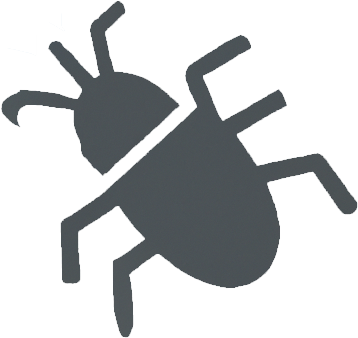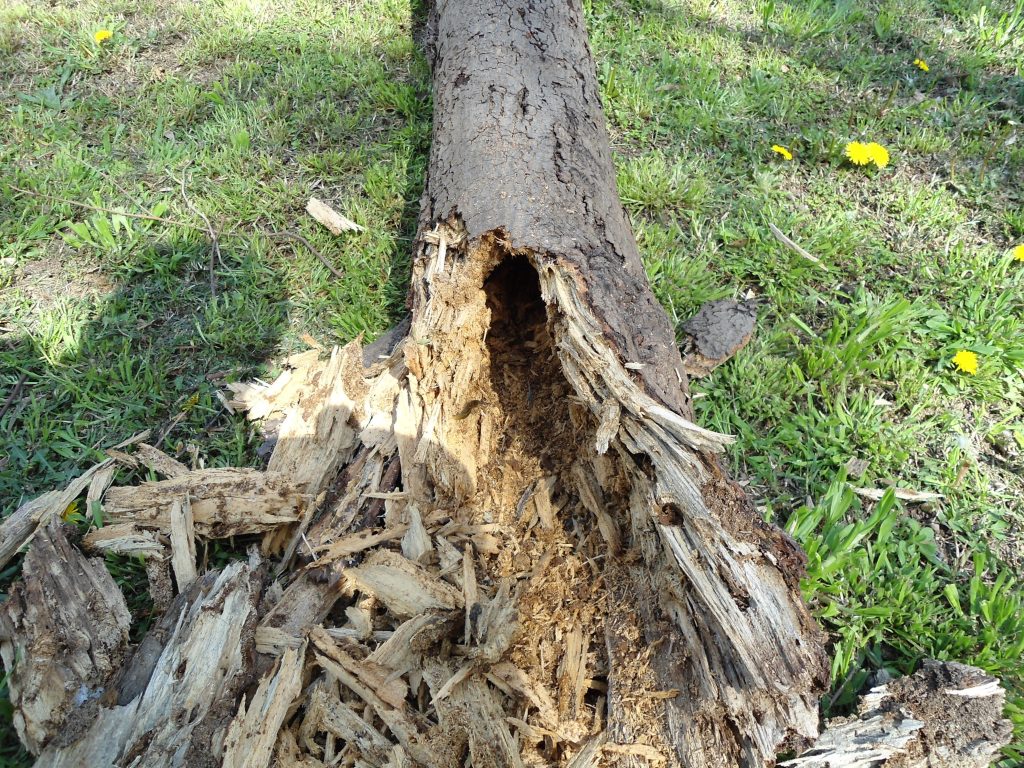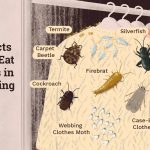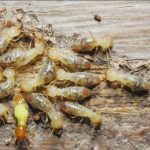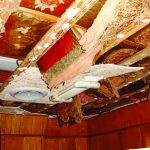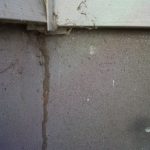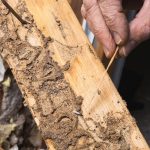Termites are a small but destructive pest that can wreak havoc on trees and other wood-based structures. In this article, we’ll explore how to spot and treat termite infestations in trees. We’ll look at the signs of termite infestations, the potential damage they can cause, and how to best prevent and treat them. Let’s get started!
Types of Termites
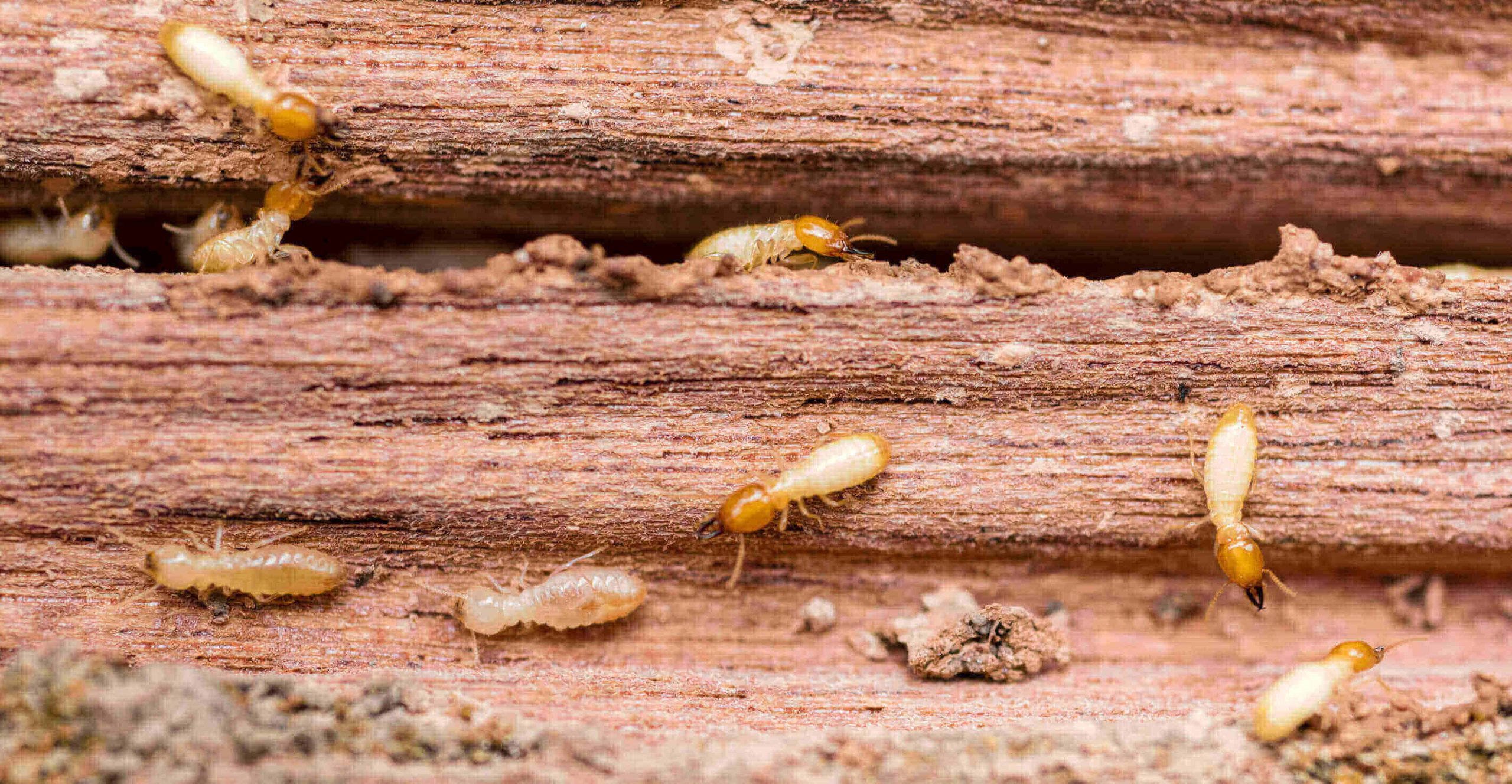
- Subterranean termites: These termites live in underground colonies and feed on wood and other organic materials.
- Drywood termites: They live in wood and feed on plant material. They can cause significant damage to wooden structures.
- Formosan termites: These termites are aggressive and can cause severe damage to wooden structures in short periods of time.
- Conehead termites: These termites are named for their distinctive head shape. They are found in warm, humid areas and feed on wood.
Signs of Termites in Trees
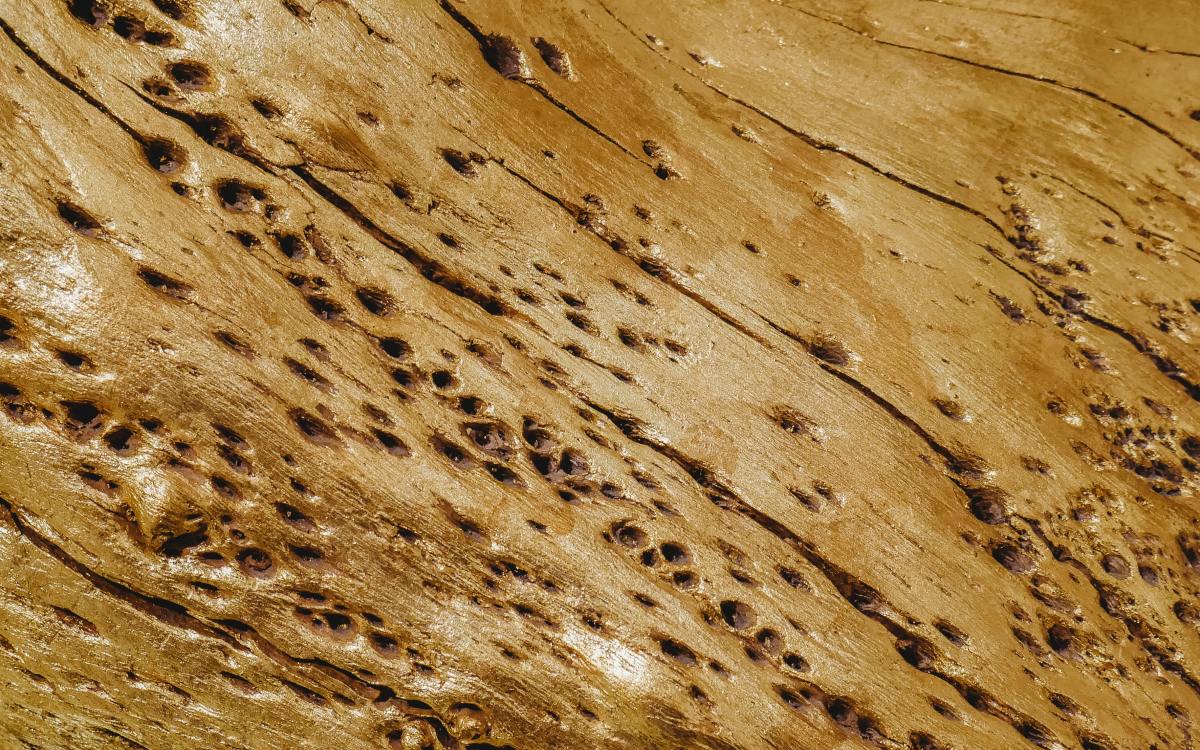
- Discoloration of leaves
- Foliage thinning or wilting
- Cracks in the bark
- Presence of mud tubes on the trunk or exposed roots
- Shriveling of the bark
- Woody galleries in the trunk
- Presence of termite wings or swarmers
- Discolored sapwood
- Presence of sawdust-like material
Prevention of Termites in Trees
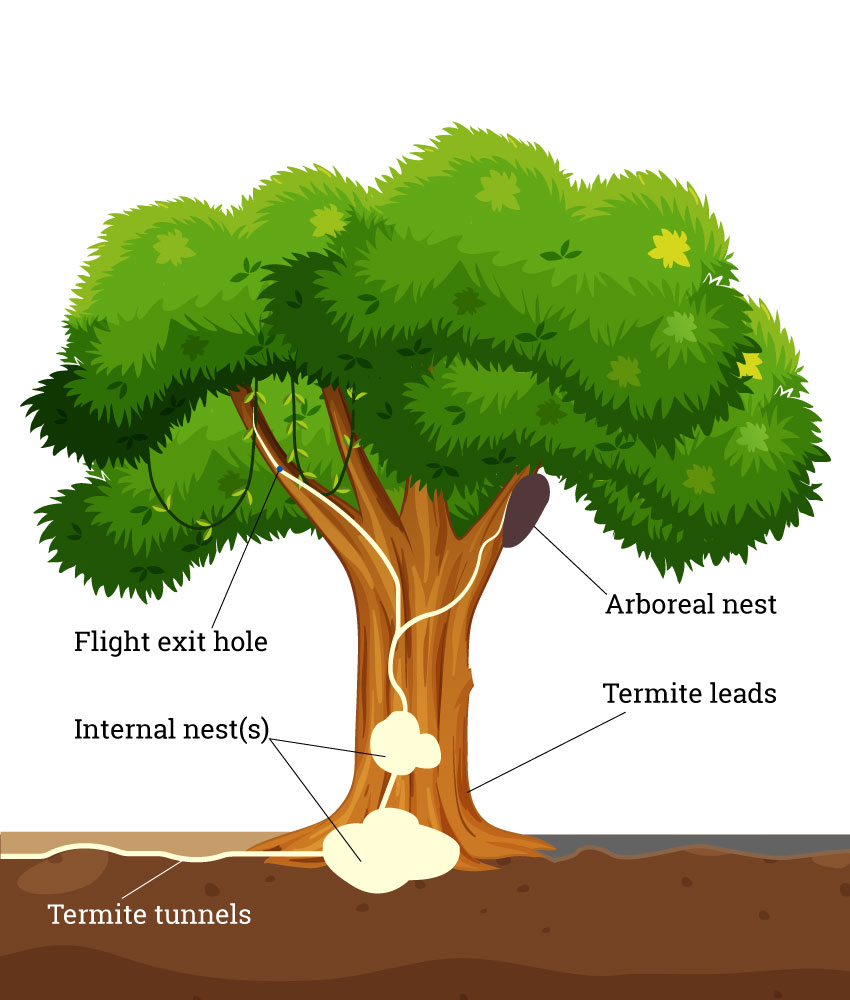
| Prevention Measures | Explanation |
|---|---|
| Inspection and Monitoring | Regularly inspect trees for signs of termite infestation, such as sawdust, mud tubes and tunnels, swarmers, and damaged wood. |
| Soil Treatment | Treating the soil around the trees with a termiticide can help prevent termites from invading the tree. |
| Moisture Control | Termites are attracted to moisture sources, so reducing moisture around the trees can help prevent infestations. |
| Cultural Control | Removing dead wood and debris can help reduce the chances of termites invading the tree. |
| Chemical Control | Using insecticides or insect growth regulators can help control the termite population around the trees. |
Termite infestations can cause serious damage to trees, so it is important to take preventive measures to protect them. Regular inspection and monitoring of trees can help identify potential termite infestations before they become a problem. Soil treatment with a termiticide can also help to keep termites away. Moisture control is also important, as termites are attracted to sources of moisture. Removing dead wood and debris can also help reduce the chances of termites invading the tree. Chemical control using insecticides or insect growth regulators can also help to control the termite population.
Treating Termites in Trees
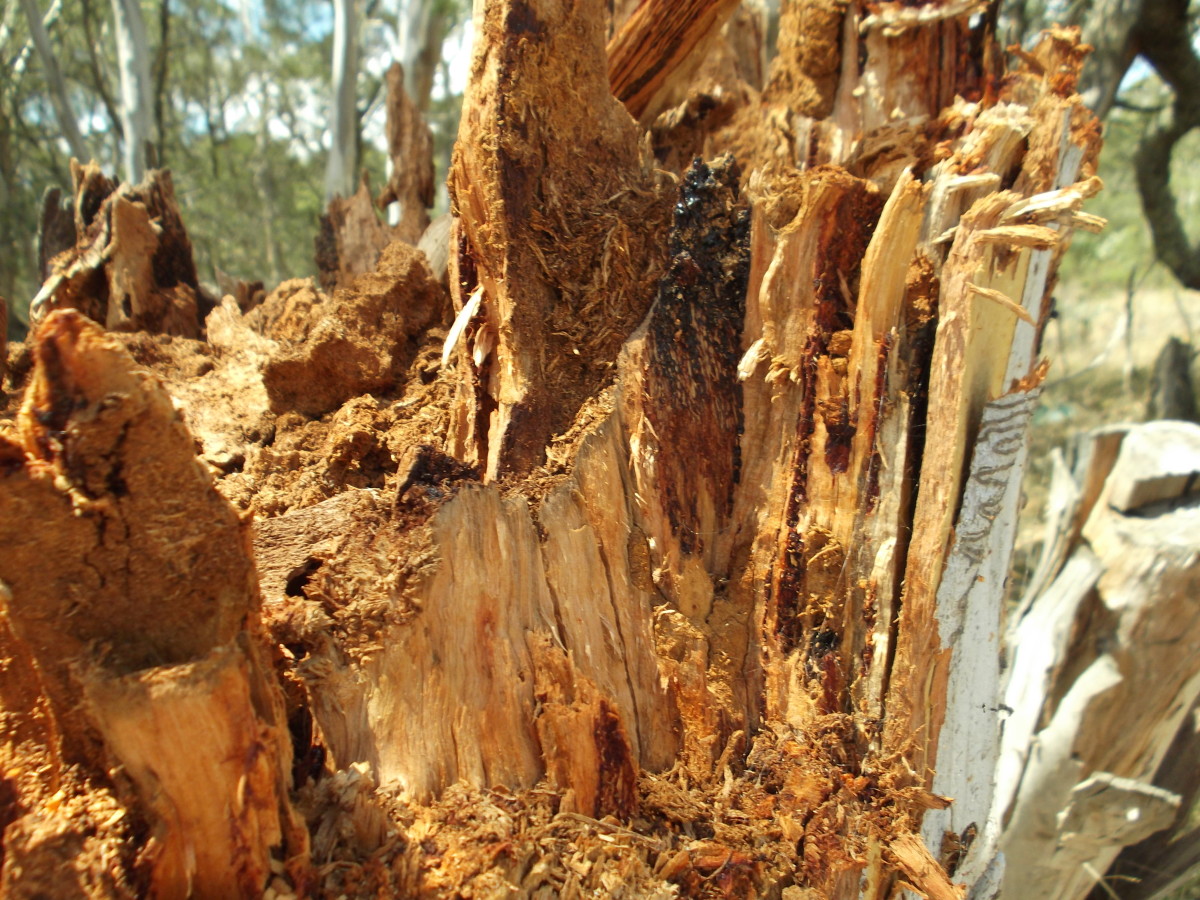
< table >
Chemical treatment is the most effective way to treat termites in trees, as it creates an impenetrable barrier around the tree and kills any termites that come in contact with it. Baiting is also a popular method of treating termites in trees, as it involves placing baits around the tree to attract and kill termites. Physical removal is the least effective method, as it involves manually removing the termites from the tree and destroying the nest.
DIY Solutions to Kill Termites in Trees
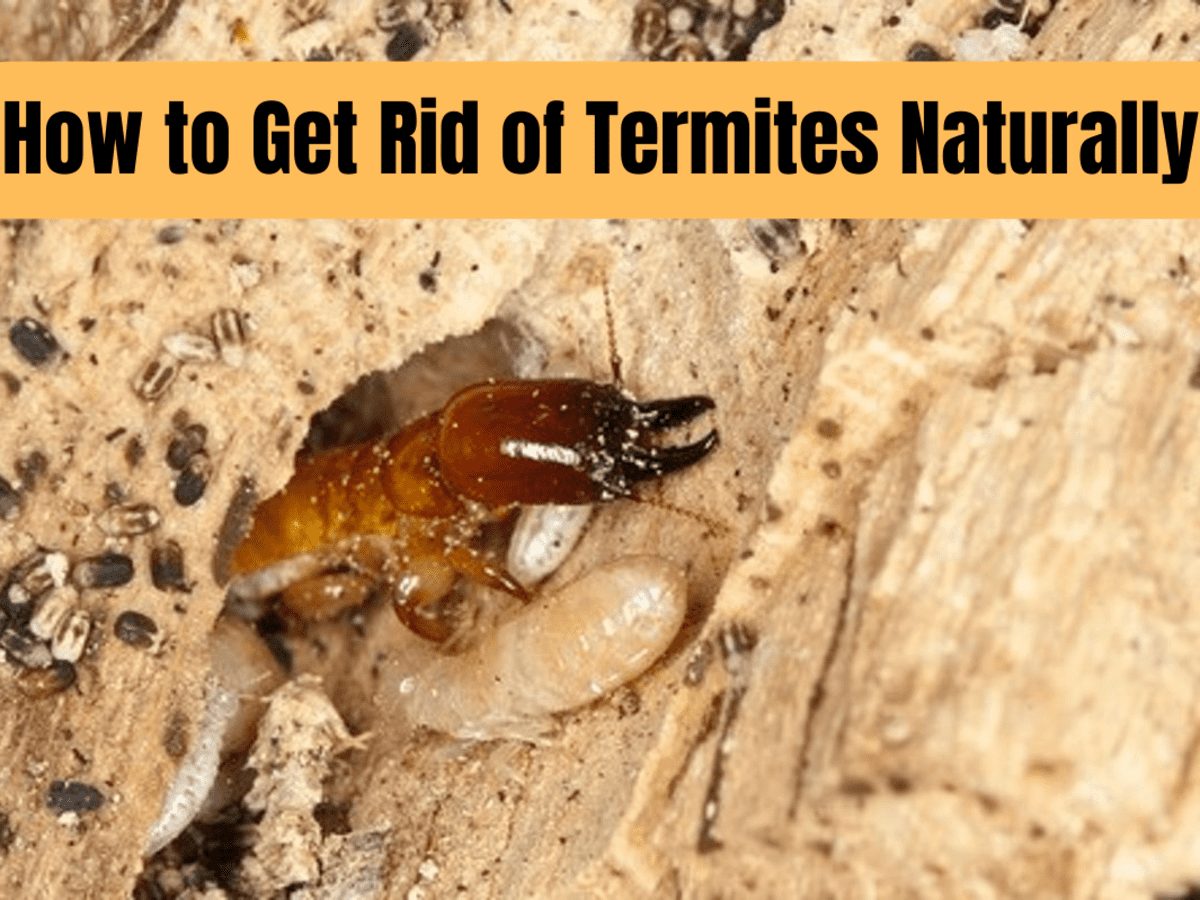
| Solution | Description |
|---|---|
| Bait Stations | Bait stations are the most effective way to get rid of termites in trees. They are placed around the tree and contain a bait that attracts the termites. Once they eat the bait, the termites will be killed. |
| Insecticidal Sprays | Insecticidal sprays are a good option for killing termites in trees. These sprays can be used on both the tree trunk and the branches. The insecticide will kill the termites on contact. |
| Soil Treatments | Soil treatments are a great way to get rid of termites in trees. The treatment will kill the termites that are living in the soil around the tree. This is a long-term solution that will protect the tree from future infestations. |
| Physical Removal | Physical removal is the most labor-intensive option for getting rid of termites in trees. You will need to manually remove the termites from the tree and then dispose of them. This method is not recommended for large infestations. |
These DIY solutions can help you get rid of termites in trees without having to hire a professional. However, if the infestation is extensive, it may be best to call an exterminator.
Professional Treatment of Termites in Trees
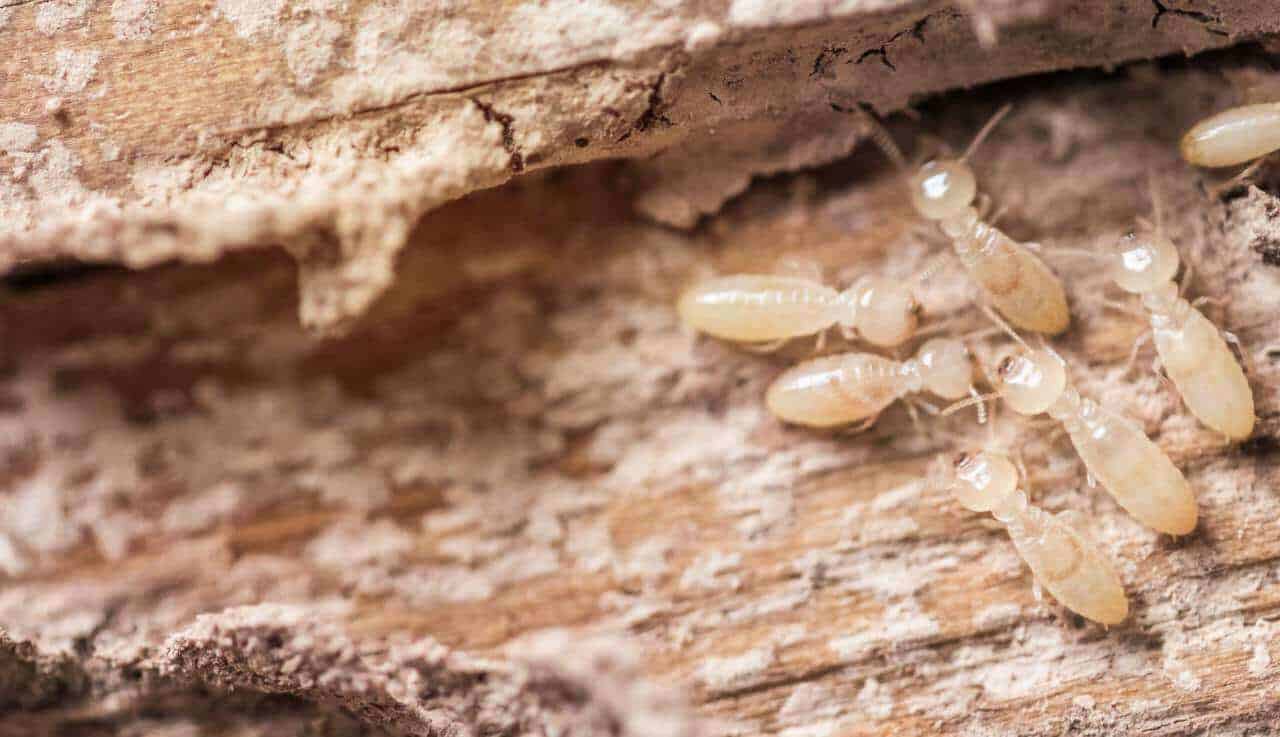
| Treatment | Pros | Cons |
|---|---|---|
| Fumigation | Kills all stages of termites, including eggs, and eliminates entire infestations | Can be expensive, requires evacuation of the area |
| Spot Treatments | Affects only the area where the pesticide is applied | May cause termites to move to a new area, requires careful monitoring |
| Baiting | Kills entire colonies, less intrusive than fumigation | May take a long time to take effect, may not be effective in all areas |
| Chemical Sprays | Easy to use, fast-acting, and cost-effective | May require repeat treatments, may not be effective in all areas |
Fumigation is the most effective way to treat a termite infestation in trees. It involves pumping a lethal gas into the area, which kills all stages of termites, including eggs. Fumigation can be expensive and requires evacuation of the area during the treatment.
Spot treatments are another option for treating termites in trees. Spot treatments involve applying a pesticide directly to the area where the termites are located. This method affects only the area where the pesticide is applied, but it may cause the termites to move to a new area, so careful monitoring is necessary.
Baiting is another option for treating termites in trees. This method involves placing bait stations around the tree and filling them with an insecticide that is attractive to termites. The bait is then consumed by the termites, killing the entire colony. Baiting is less intrusive than fumigation, but it may take a long time to take effect and may not be effective in all areas.
Chemical sprays are the most common and cost-effective way to treat termites in trees. Sprays are easy to use, fast-acting, and can be purchased at most home improvement stores. However, chemical sprays may require repeat treatments and may not be effective in all areas.
Cost of Treating Termites in Trees
Treating termites in trees can be expensive, averaging from $80 to $1000 per tree, depending on the size and the severity of the infestation. Treating the tree requires a professional to come to the property and inspect the tree. After the inspection, the professional will determine the extent of the infestation and the cost for treatment. The professional will then use either a liquid or dust insecticide to treat the tree. Depending on the size of the tree, multiple treatments may be necessary. In addition to the cost of the treatments, the property owner may be required to pay for any additional services, such as tree trimming or removal of affected tree limbs.
Pest Control for Termites in Trees
| Non-Chemical Control | Chemical Control |
|---|---|
| Remove dead wood, leaf litter, and other sources of food | Soil application of insecticides |
| Trunk sprays of insecticidal soap or horticultural oil | Tree injections of insecticides |
| Surface sprays of insecticides | Baiting systems |
Non-chemical control methods for termites in trees include removing dead wood, leaf litter, and other sources of food. Trunk sprays of insecticidal soap or horticultural oil can also be used. For more effective control, surface sprays of insecticides and soil application of insecticides near the base of the tree can be used. Tree injections of insecticides can also be used. Finally, baiting systems can be used to target and control termites in trees.
Frequently Asked Questions
How can I tell if my tree is infested with termites?
Termites can cause significant damage to trees, so it is important to identify an infestation as soon as possible. Some signs to look for are exit holes in the trunk or branches, discolored or drooping leaves, and a hollow sound when tapping the trunk. Additionally, you may observe termites or their wings around the base of the tree or in the soil. If you suspect an infestation, contact a certified arborist to assess the situation and recommend the best course of action.
What Damage Can Termites Cause to a Tree?
Termites have the potential to cause significant damage to trees, as they can burrow into their trunks and roots. This can create tunnels and galleries that weaken the structure of the tree, making it more susceptible to diseases, pests and environmental damage. The weakened tree can then become more prone to breakage, and the termites can spread to the tree’s branches and foliage, which can cause them to become brittle, discolored and deformed. In severe infestations, the tree may die.
Are there any natural methods for killing termites in trees?
Natural methods for killing termites in trees include physical removal, the use of natural predators, soil treatments, and the use of natural insecticides such as neem oil and orange oil. Physical removal involves the use of a rake, shovel, or vacuum to remove the termites from the tree. Using natural predators such as ants, beetles, and nematodes can also help reduce termite populations. Soil treatments involve the use of nematodes and beneficial fungi to control termite infestations. Natural insecticides, such as neem oil and orange oil, can also be used to kill termites in trees.
Do termites Live in Trees?
Yes, termites can live in trees. They can build their colonies in dead or decaying trees, as well as in stumps and roots. Termites most commonly enter trees through cracks in the bark or weakened areas of the tree where the bark has been damaged. They can also enter through holes made by other insects. Termites may also build their colonies in the foundations of trees or around the base of tree trunks.
What are the best treatments for termite infestations in trees?
The best treatments for termite infestations in trees include physical removal of the infestation, application of insecticides, and baiting. Physical removal involves excavating the termites and their tunnels from the tree, which is typically done by a qualified arborist. Insecticides can be applied to the tree, the surrounding soil, or both, and should be chosen based on the type of termite present. Baiting is an effective method of controlling infestations, as it attracts termites and uses them to spread insecticide throughout the termite colony. Baiting should be done with professional monitoring to ensure its effectiveness.
Conclusion
Termites can be difficult to spot and treat, but these steps can help to detect and manage an infestation. Regular inspections of trees, fences, decks, and other wood structures can help identify both termites and other wood-destroying pests. If a termite infestation is found, contact a licensed pest management professional for treatment. Following their recommendations can help to protect the tree from further damage, and potentially save it from complete destruction.
